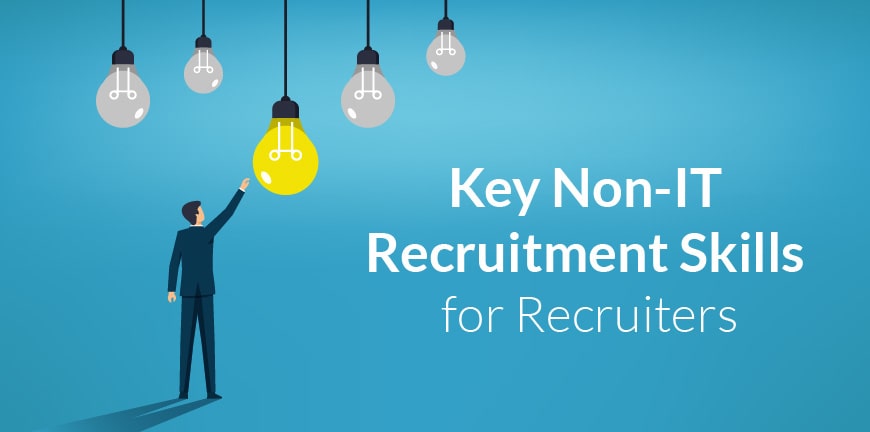
How to Streamline Payroll Management in HR in 2025?
26/11/2024
Contract Staffing and Permanent Staffing: What’s the Difference?
27/11/2024Scouting for talent is a tough task for any team, especially in 2025. When you have a dedicated sourcing team working for you, it becomes a lot easier. Strategic talent sourcing requires effort and the right kind of coordination.
A recruitment partner could be the final answer to your problems, but there are some things you can do to improve your sourcing process. Let us look at talent sourcing and the talent sourcing process in more detail before we elaborate on the strategies that can help improve talent sourcing effectiveness.
What is Talent Sourcing?
The process of finding and engaging with candidates for present and future roles is called talent sourcing. It is a proactive process and involves research, networking, careful planning and building relationships with candidates as part of the talent sourcing strategy.
What Is the Difference Between Recruiting, Acquisition and Sourcing?
Recruiting is the complete end-to-end process beginning with sourcing through screening and ending with interviews, offer and onboarding. Talent sourcing is just the first step of identifying prospective candidates and engaging them for current or future roles. Acquisition is very similar to recruitment but is more strategic in nature.
The Talent Sourcing Process
1. Need Analysis
In this stage, a sourcing team analyzes the current situation and the hiring needs. What skills are you short of? Is there a shortage of manpower specifically? How many teams are affected by productivity concerns? How often are you not able to meet deadlines? These are some of the questions that you need to answer in this stage. Answering these questions and delving deeper into the problem will help develop a better plan and purpose for the sourcing process.
The needs analysis stage is important because it helps identify the right sourcing channels and helps justify the expenditure on each sourcing channel. and negotiating the best possible budget for each sourcing channel. This stage may involve gathering and analyzing data on the current sourcing channels and methods, identifying any gaps or weaknesses in and consulting with stakeholders to suggest ways to rectify them and ensure the sourcing process is aligned with the business goals.
2. Talent Sourcing Analysis
Identify the sourcing channels that meet the needs of the business. You may also identify yet to be used channels and websites and job boards or conduct market research to identify what most recruiters are using, especially for specialized roles.
Consider the reputation of the sourcing channel and keep tracking the job post to ensure there are no duplicates posted by other recruiters elsewhere. This will ensure there are no malicious posts that make use of the job description that you used and that your brand reputation remains intact.
3. Develop a Strategic Talent Sourcing Strategy
In this step, you will be shortlisting the channels where the risk of hiring a bad candidate is low and total hiring costs stay within your budget. Look at the business goals, your internal capabilities and resources available for each recruitment and play to your strengths and utilize your opportunities. SWOT it if you must.
Some of the things you can consider are the strength and expertise of your sourcing team, the software you use in sourcing, and the data analytics capabilities that you have. The threats you may need to consider are from your competition, economic fluctuations, other disruptions to business functioning, and incoming technological disruptions.
4. Create a Candidate Persona
This is how an ideal candidate for the job would look like. This includes the skills, interests, experience levels, and educational background of the ideal candidate. Human resources experts will create a persona document will all these features as a reference to begin the sourcing process.
To get more clarity on this, you must discuss the needs of the business with your hiring manager and keep redefining and modifying the persona over time. You can also go back from the results and see what is working and what is not. This will help attract the right candidates for the role and improve your sourcing strategy.
5. Implementation and Integration
Then start implementing the talent sourcing strategy. Keep track of the candidates you have in the talent pipeline. Are you working with other sourcing partners? Ensure that you keep your sourcing partner of your progress if you have not outsourced the entire sourcing process to them. The tighter and immediate your needs are the closer you must cooperate with the sourcing partner.
Regular meetings that help discuss the progress made in sourcing can be incredibly valuable. Brainstorming sessions can also help shortlist candidates for further communication and to discuss the sourcing channels and strategies to use.
6. Benchmarking
Ensuring that the talent sourcing process is working perfectly is very important. For this, you would need to analyze some talent sourcing metrics. Analyze only the relevant talent sourcing metrics and see if your talent sourcing process is on track. External factors such as market conditions also affect the talent sourcing process, and you would need to keep updating the souring strategy as you encounter new challenges.
8 Strategies for Sourcing Talent
1. Leveraging the Right Platforms
Making use of the right platforms can be a gamechanger. Use both social media platforms like LinkedIn as well as job boards and websites like Naukri and Glassdoor to hire the best.
2. AI-focused Hiring
When AI comes into the picture, it greatly helps simplify hiring. AI will help analyze thousands of resumes, looking for the necessary skills, helping you shortlist the best one. AI will also automate responses so that candidate experience is not affected even if your sourcing team is short-staffed.
3. Leveraging Referrals from Trusted Employees
Your trustworthy employees are your greatest asset. Since they are most often a great cultural fit too and dedicated to work, you can be assured of these qualities in their recommendations too.
4. University Relations and Campus Sourcing
Maintaining great relations with universities can also help speed up the sourcing process. Universities are a great source of high-quality and relevant candidates, especially for entry-level roles. Coordinating with the on-campus representative for sourcing on campus can be a gamechanger for your business.
5. Networking Events that Emphasize Diversity
Events where you put your best foot forward and meet up with other players in your industry show off your reputation and help build faith in your capabilities. You can find some good candidates through networking events like exhibitions. You can also showcase your diversity at such events, something Gen Z deeply values.
6. Skills and Attitude Based Hiring
Rather than focus on the degrees acquired by a candidate, you must focus on the skills and the attitude of the person when hiring for a position. Such skills and attitude-based hiring will help you secure the right candidates for a dynamic learning environment, which all offices will have in the age of AI.
7. New Employer Branding Techniques
Creating a flexible work environment and allowing employees to work at their own pace, provided targets are reached, all contribute to building a great workplace and this in turn builds the employer brand. Other things you can do are community outreach and sustainability initiatives.
8. Passive Candidate Sourcing
With a great talent pipeline, you have a better assurance that you will eventually hire the best candidates for the job. But with a database of passive candidates, happily working in similar roles in other companies, you have a chance to fill the role with someone who you know will get the job done, thanks to proof of them working in a similar role and handling it well.
Are You Looking for a Hiring Partner?
If the answer is yes, you are on the right website. Alp Consulting, a recruitment and staffing company with over two decades of experience in hiring for top Fortune 500 companies, wants to help you with recruitment. Whether you wish to outsource the entire recruitment process or a part of it, our RPO services will help you meet your business needs and find you the best talent. Talk to us today.
FAQs
1. What is sourcing in recruitment?
Talent Sourcing in recruitment is the process of finding and initially screening applications from eligible candidates. A sourcing specialist makes use of several sourcing channels to work on a single application and will receive up to a thousand or more applications for a single job.
2. Why is talent sourcing important?
Talent sourcing is important because it is the first stage of recruitment, a process that contributes to the growth of the company. It also ensures that recruitment becomes more strategic and saves on the money allocated towards it.
3. What are the components of talent sourcing?
The components of talent sourcing are creating detailed job descriptions, identifying potential candidates, crafting responses to interested candidates, screening applications, and managing relationships with rejected candidates.
Contact Us For Business Enquiry

Amit Saproo
Amit Saproo is the Head of Operations at ALP Consulting with nearly 17 years of experience in Executive Search, RPO, Leadership, and IT & Engineering recruitment. He leads nationwide recruitment programs across Technology, BFSI, and R&D domains, driving strategic hiring solutions for diverse client needs. Amit excels in building and managing high-performance teams that deliver scalable, end-to-end recruitment and consulting services.




